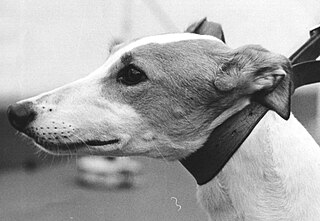Related Research Articles

Wimbledon Stadium, also known as Wimbledon Greyhound Stadium, was a greyhound racing track located in Wimbledon in southwest London, England.
Crayford & Bexleyheath Stadium was a greyhound racing and motorcycle speedway stadium in the London Borough of Bexley.
The 1927 UK & Ireland Greyhound Racing Year was the second year of greyhound racing in the United Kingdom and Ireland.
The 1931 UK & Ireland Greyhound Racing Year was the sixth year of greyhound racing in the United Kingdom and Ireland. The total annual attendance across the country for 1931 increased to 17,906,917 from 17,119,120, a fifth consecutive annual increase.

The 1932 UK & Ireland Greyhound Racing Year was the seventh year of greyhound racing in the United Kingdom and Ireland. The total annual attendance across the country for 1932 topped 20 million, increasing to 20,178,260 from 17,906,917, a sixth consecutive annual increase.
The 1934 UK & Ireland Greyhound Racing Year was the ninth year of greyhound racing in the United Kingdom and Ireland.
The 1937 UK & Ireland Greyhound Racing Year was the 12th year of greyhound racing in the United Kingdom and Ireland.
The 1938 UK & Ireland Greyhound Racing Year was the 13th year of greyhound racing in the United Kingdom and Ireland.
The 1951 UK & Ireland Greyhound Racing Year was the 26th year of greyhound racing in the United Kingdom and Ireland.

The 1953 UK & Ireland Greyhound Racing Year was the 28th year of greyhound racing in the United Kingdom and Ireland.
The 1955 UK & Ireland Greyhound Racing Year was the 30th year of greyhound racing in the United Kingdom and Ireland.
The 1957 UK & Ireland Greyhound Racing Year was the 31st year of greyhound racing in the United Kingdom and Ireland.
The 1958 UK & Ireland Greyhound Racing Year was the 32nd year of greyhound racing in the United Kingdom and Ireland.
The 1964 UK & Ireland Greyhound Racing Year was the 38th year of greyhound racing in the United Kingdom and Ireland.
The 1965 UK & Ireland Greyhound Racing Year was the 39th year of greyhound racing in the United Kingdom and Ireland.
The 1967 UK & Ireland Greyhound Racing Year was the 41st year of greyhound racing in the United Kingdom and Ireland.

The 1968 UK & Ireland Greyhound Racing Year was the 42nd year of greyhound racing in the United Kingdom and Ireland.
The 1975 UK & Ireland Greyhound Racing Year was the 49th year of greyhound racing in the United Kingdom and Ireland.
The 1980 UK & Ireland Greyhound Racing Year was the 54th year of greyhound racing in the United Kingdom and Ireland.
Stamford Bridge Greyhounds was the greyhound racing operation held at Stamford Bridge in London.
References
- ↑ Dack, Barrie (1990). Greyhound Derby, the first 60 years, pages 65-67. Ringpress Books. ISBN 0-948955-36-8.
- ↑ Fortune, Michael. Irish Greyhound Derby 1932–1981 pages 1-2. Victory Irish Promotions Ltd.
- ↑ Hobbs, Jonathan (2007). Greyhound Annual 2008, pages 153-154. Raceform. ISBN 978-1-905153-53-4.
- ↑ Genders, Roy (1981). The Encyclopedia of Greyhound Racing, pages 129-130. Pelham Books Ltd. ISBN 07207-1106-1.
- 1 2 Genders, Roy (1975). The Greyhound and Racing Greyhound. Page Brothers (Norwich). ISBN 0-85020-0474.
- 1 2 "Hall of Fame". Greyhound Board of Great Britain.
- ↑ Culpepper Clarke, Carlo F (1934). Greyhound and Greyhound Racing. Methuen & Co Ltd (London).
- ↑ Tarter, P Howard (1949). Greyhound Racing Encyclopedia. Fleet Publishing Company Ltd.
- 1 2 Genders, Roy (1981). The Encyclopedia of Greyhound Racing. Pelham Books Ltd. ISBN 07207-1106-1.
- ↑ "Track location". Norfolk Heritage Explorer.
- ↑ Tarter, P Howard (1949). Greyhound Racing Encyclopedia. Fleet Publishing Company Ltd. p. 58.
- ↑ "Workington". Greyhound Racing Times. Retrieved 24 December 2024.
- ↑ "Walthamstow Greyhound Stadium To-Night Grand Opening" . Daily Mirror. 19 June 1933. Retrieved 16 August 2022– via British Newspaper Archive.
- 1 2 3 4 Genders, Roy (1990). NGRC book of Greyhound Racing. Pelham Books Ltd. ISBN 0-7207-1804-X.
- ↑ Barnes, Julia (1991). Daily Mirror Greyhound Fact File, Vol Two. Ringpress Books. ISBN 0-948955-61-9.
- ↑ Barnes/Sellers, Julia/John (1992). Ladbrokes Greyhound Fact File, pages 142-143. Ringpress Books. ISBN 0-948955-22-8.
- ↑ Fortune, Michael. Irish Greyhound Derby 1932-1981. Victory Irish Promotions Ltd.
- ↑ Fortune, Michael. The 75 Years History of the Irish Greyhound Derby. Irish Greyhound Review. ISSN 0332-3536.
- ↑ Comyn, John. 50 Years of Greyhound Racing in Ireland. Aherlow Publishers Ltd.